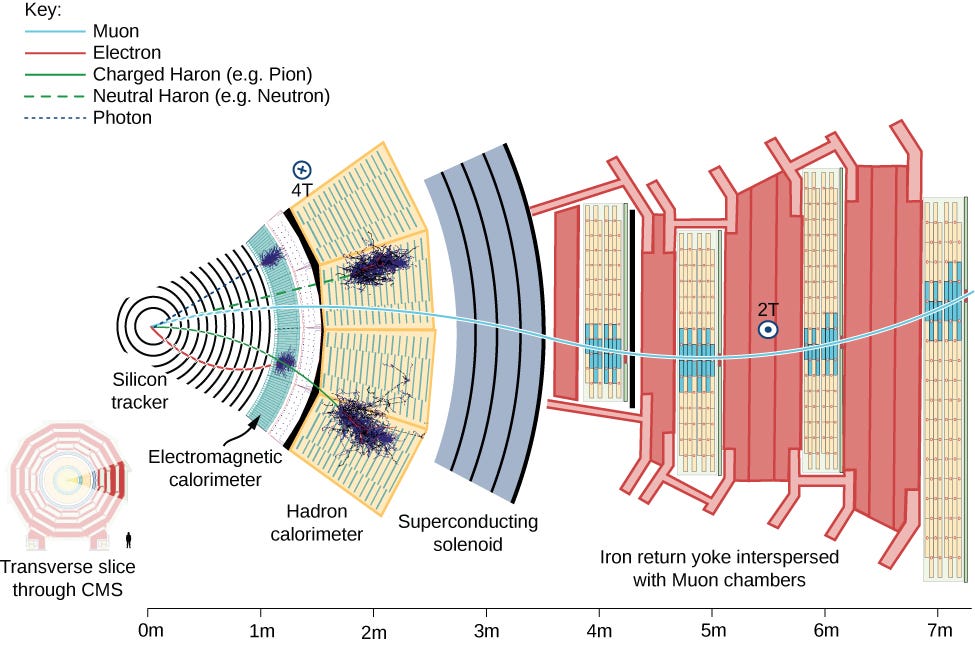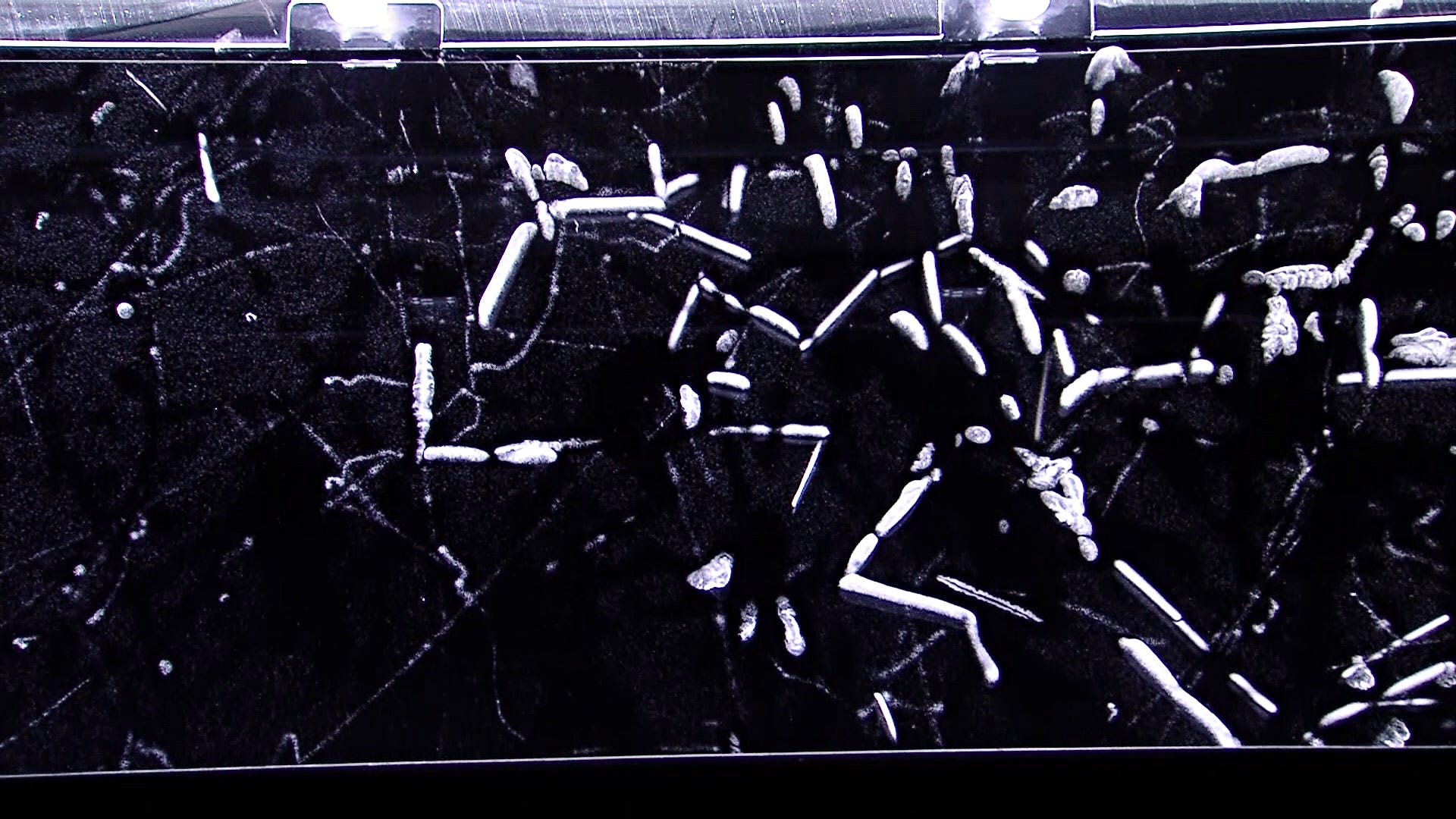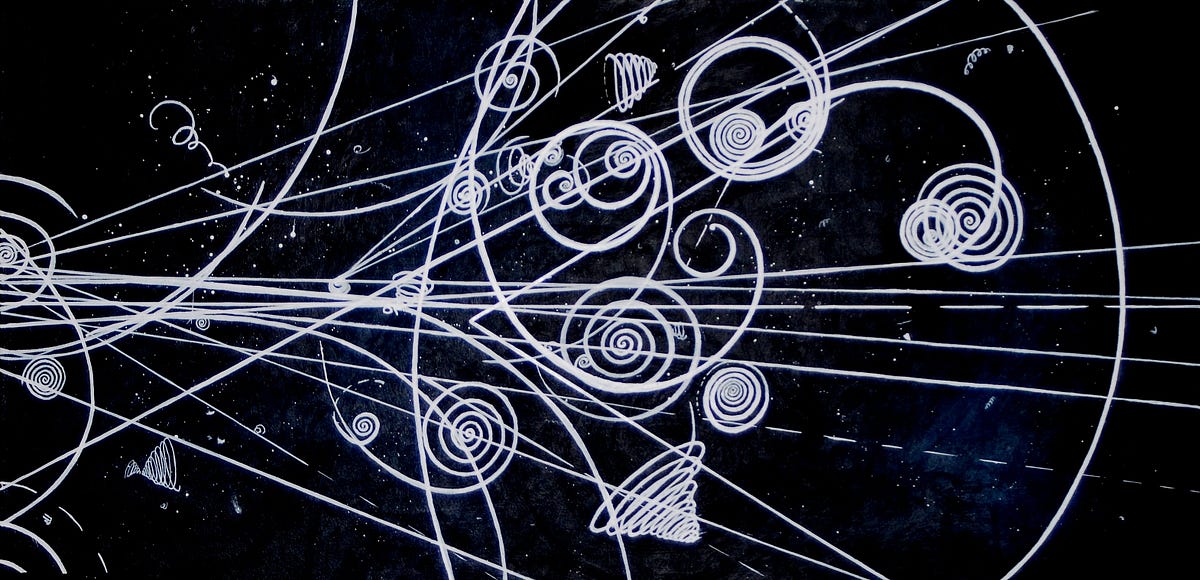Introduction
Particle detector is a device that is used to quantify the momenta and identify the particle that passes through the detector after being produced in a collision or a decay, which also referred to as an event. The event might be a collision deliberately engineered to occur within the detector leading too many particles which in turn decay into many more, or it could be a decay the occurs naturally. To reconstruct the event and identify every particle produced by the collision, its necessary to know the mass and the momentum of the particles. The mass can be found by measuring the momentum and either the energy or velocity. The modern large scale particle detectors like LHCb or ATLAS, encompass many forms of tracking chambers and calorimeters that surround the interaction point also know as hermetic detectors.
Momentum Determination
Tracking Detectors
Tracking detector shows the track or the path taken by a particle. Momentum measurements can be made by applying magnetic field perpendicular to the direction of the travel in a tracking detector, this causes the particle to curve into a circular orbit with a radius proportional to the momentum of the particle. The radius is also proportional to the mass-charge ratio m/q, so if two particles have the same speed, and one is half as heavy as the other but has twice the charge, they will both orbit with the same radius. Since magnetic field exerts a force perpendicular to the direction of the particle’s direction, it can do no work on the particle, hence the particle does not lose energy as a result of this process. Thus determining the momentum, the energy can be measured by a calorimeter and the mass of the particle, then we can deduce the identity of the particle. Also, the direction of the particle curvature in the magnetic field reveals its charge, since negative charges curve in the opposite directions.

Cloud Chamber
Cloud chamber is the earliest tracking detector. In oversaturated vapour, primary ionization clusters left behind a charged particle will become centres of condensation. Droplets will follow the track of a particle, their number per unit of length being proportional to the density of ionization. Such conditions can be achieved by the fast expansion of the chamber volume, which in its turn can be triggered by an external particle detector.

Emulsions
Emulsion consist of crystals of AgBr and AgCl suspended in a body of gel. An ionizing particle passing through the emulsion breaks up these molecules. After developing the film, the released metallic Silver grains are locked in the main body of the emulsion film while the remaining part will be washed away. With the of a microscope, these grains usually of about half micron diameter, it can be observed including their exceptional high spatial resolution as a black dots. Emulsion films are still being used due to their many advantages

Bubble Chamber
A bubble chamber is a container with liquefied gas like hydrogen, the gas is close to the boiling point. When a charged particles going through the chamber it will leave behind clusters of ionization. If the pressure is dropped for a short time, the boiling temperature drops and the liquid becomes overheated. Now the boiling is about to begin, bubbles are formed on ionization clusters and start growing. In about 1 ms, when bubbles are about 0.1−1mm in size, pictures from different angles are taken and pressure is restored. The increased pressure brings the liquid back below the point of boiling and all bubbles collapse. Multiple pictures take from different directions allow for unambiguous 3D reconstruction.
#particle-physics #high-energy-physics #physics #particle-decay #deep-learning #deep learning
